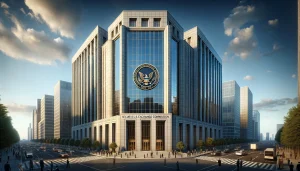Bitcoin mining has recently witnessed a resurgence of concentration, harking back to a situation reminiscent of 2013. Over the past 72 hours, Antpool and Foundry USA have collectively commanded a substantial 51.43% of Bitcoin’s total hashrate. This level of control has been unprecedented since 2013 when mining pools like Ghash and Btc Guild dominated 55% of the network’s hashrate.
Bitcoin mining concentration hits 2013 highs
A noteworthy incident in March 2013 involved an accidental fork, leading to BTC Guild collaborating with developers to roll back the software. This triggered debates about its decentralization and raised uncomfortable questions about its protocol. Fast forward to the present, and while Antpool and Viabtc’s combined hashrate mirrors the dominance seen in 2013, there’s a crucial difference – the absence of a chain-splitting episode.
This recent concentration of mining power has reignited concerns within the community, shifting the focus from potential 51% attacks to issues of censorship within hashrate and consensus discussions. The U.S. Treasury’s Office of Foreign Assets Control (OFAC) has been blacklisting crypto addresses, giving miners the discretion to choose which transactions to process. In response to regulatory pressures, North American mining company Marathon initially produced OFAC-compliant blocks but later abandoned this practice after the introduction of Taproot.
Challenges and parallels in decentralization efforts
F2pool, currently the fourth largest mining pool, faced criticism for filtering transactions linked to OFAC-sanctioned addresses but ceased this practice after community pushback. Even Ocean Pool, supported by Jack Dorsey and led by Bitcoin Core developer Luke Dashjr, faced criticism for censoring transactions related to coinjoin privacy methods and Ordinal inscriptions. Despite a slight dip in hashrate following the backlash, Ocean Pool’s hash power has remained above 450 petahash per second (PH/s).
This evolving landscape of Bitcoin mining, marked by fluctuating centralization and emerging concerns over transaction censorship, underscores the dynamic nature of the ecosystem. It calls for continuous vigilance and monitoring. Comparing the current situation with previous years reveals interesting patterns. In 2016, the top two pools held only 32.25% of the hashrate, while 2017, 2018, and 2019 did not witness such centralization. However, in 2020, 2021, and 2022, Bitcoin mining pools started to centralize again. By June 2022, Foundry USA and Antpool already had 38.47% of the total hashrate.
As the community grapples with challenges to Bitcoin’s decentralization ethos, advocates for decentralization must ensure an ongoing debate about the network’s integrity and the future of Bitcoin mining. The parallels with 2013 serve as a reminder of the importance of maintaining a balance in the distribution of hashrate to uphold the principles of decentralization in the Bitcoin network. The current state of Bitcoin mining reflects a dynamic ecosystem, one where centralization concerns and transaction censorship issues are in the spotlight.




